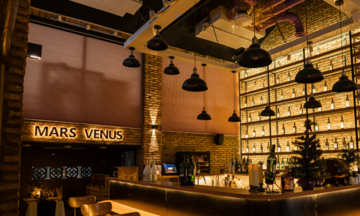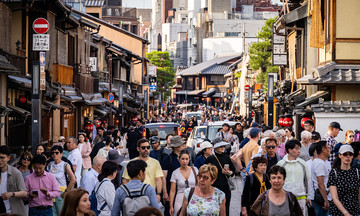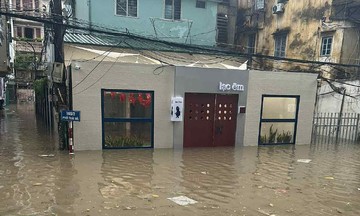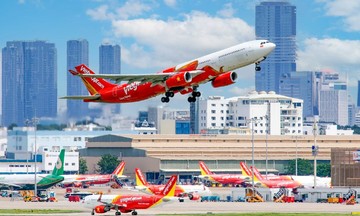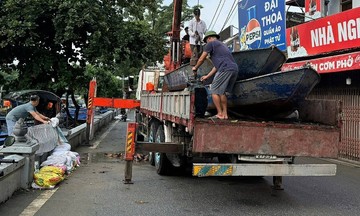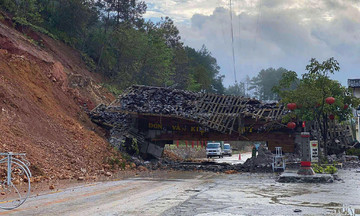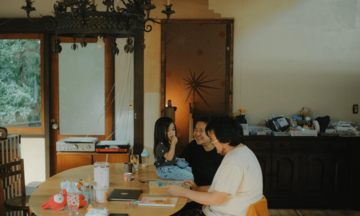Sa Pa's rice harvest is among the earliest in Northwest Vietnam, preceding Mu Cang Chai and Hoang Su Phi. While the rice in the central area is left to ripen longer for the scenic views and tourist attraction, some remote villages have already begun harvesting. September in Sa Pa offers visitors the spectacle of golden terraced fields cascading down the mountainsides.
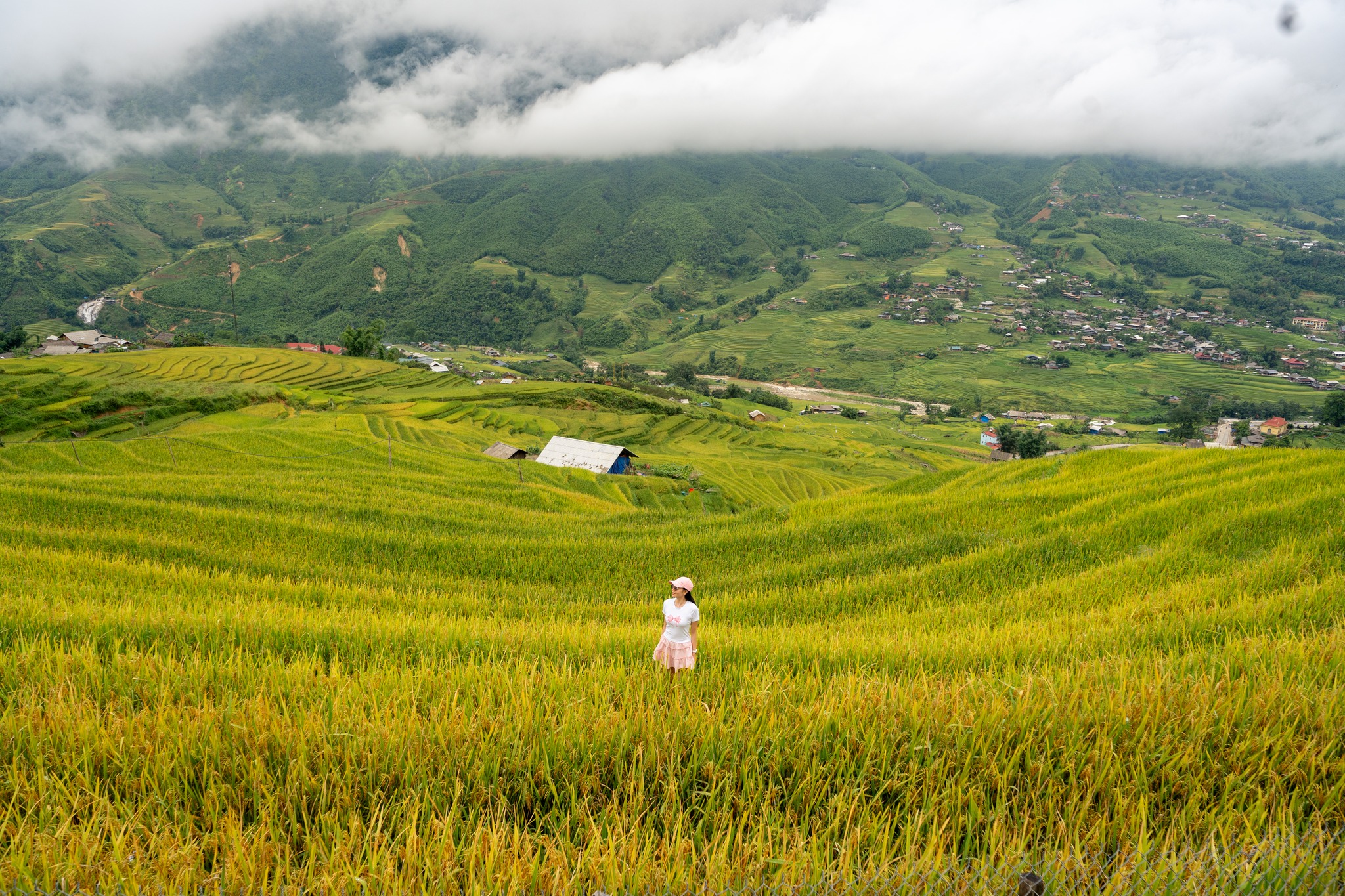 |
Rice in Ta Van village at the end of August. Photo: *Nguyen Chi Nam* |
This 48-hour itinerary for experiencing Sa Pa's golden rice season is based on Nguyen Chi Nam's late August trip and VnExpress's research.
Day 1
Travel to Sa Pa
Travelers can book a limousine from Hanoi to Sa Pa or a bus from My Dinh bus station for 250,000 to 400,000 VND per person, depending on the seat class. The journey takes about 5 to 6 hours.
The train from Hanoi to Lao Cai takes 7 to 9 hours, followed by a bus or taxi to Sa Pa's center. Train tickets range from 450,000 to 1 million VND, depending on the seat class and train type. Motorbike rentals in Sa Pa cost around 100,000 to 150,000 VND per day, offering flexibility for exploring the rice paddies. Alternatively, motorbike taxis are readily available.
Breakfast at Nga Canh
This renowned bun cha (vermicelli noodles with grilled pork) restaurant on Dien Bien Phu Street, near the drop-off point for sleeper buses, has a discreet storefront. However, inside, a spacious dining area filled with the aroma of grilled pork awaits.
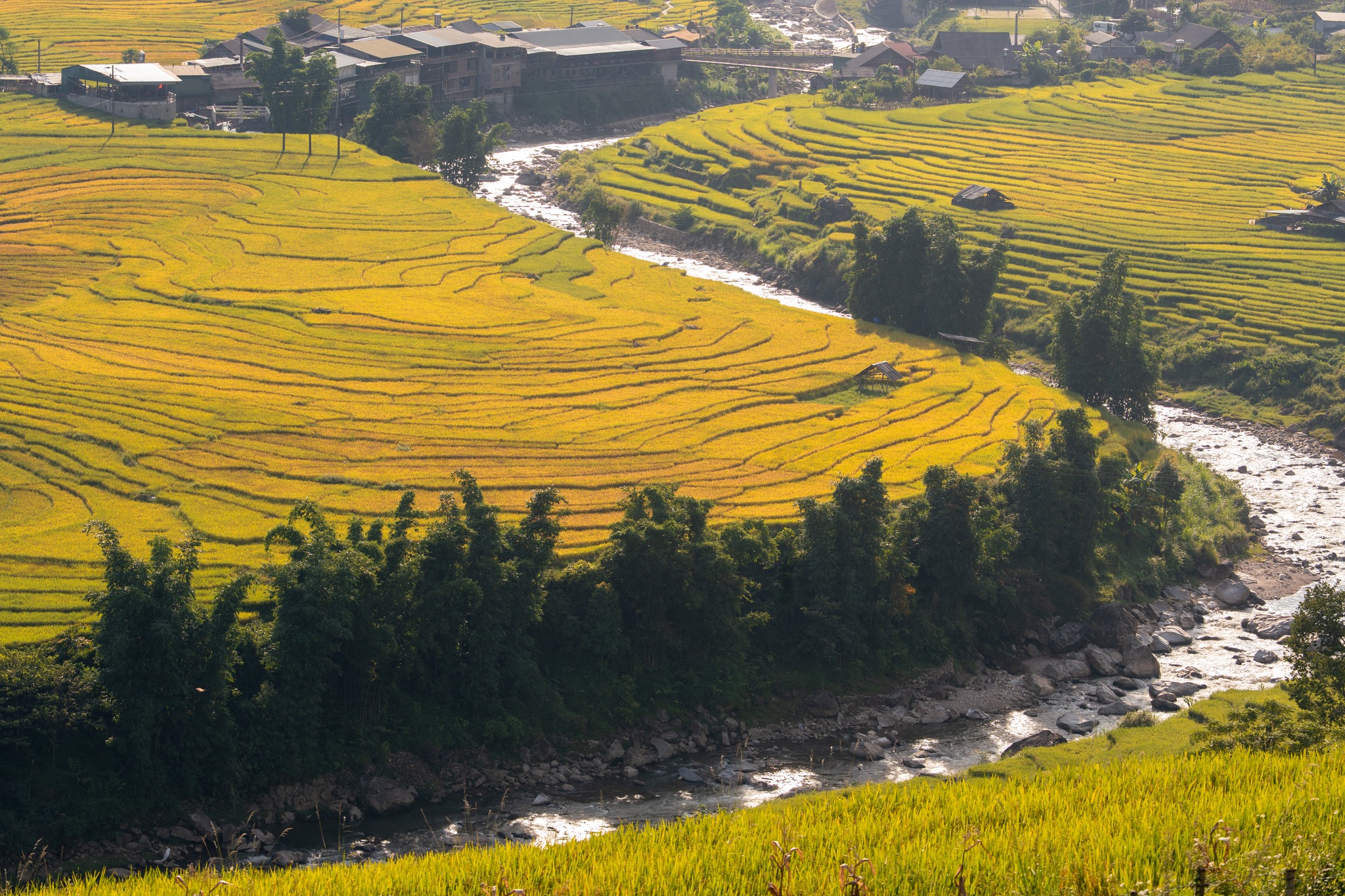 |
A bowl of bun cha at Nga Canh. Photo: *Thanh Long* |
Nga Canh's bun cha features a sweet broth made from pork bones, fermented rice, chili, and spices characteristic of Northwest Vietnam. The dish includes grilled pork, fried tofu, various types of cha (fish cakes, grilled pork patties, and meatballs), and fresh herbs like cilantro, mint, and lettuce. A bowl costs 45,000 VND.
View from Muong Hoa train and Fansipan cable car
Enjoy breakfast and coffee at Viettrekking on Hoang Lien Street, overlooking the Muong Hoa mountain train. For a panoramic view of the golden rice fields, take the train and cable car journey through the valley at 1,600 m, from Sa Pa's center to Fansipan peak. The mist-covered windows offer glimpses of the landscape and local life, unfolding like a slow-motion film. The golden terraced fields stretch out, sometimes obscured by clouds, creating a vibrant natural tableau. From this vantage point, observe the layers of golden rice paddies interspersed with harvested fields. The combined train and cable car ticket costs upwards of 1.2 million VND.
Visit Cat Cat village
Located 2 km from Sa Pa's center, Cat Cat, an H'Mong village, is accessible by trekking or motorbike. The village preserves many customs and traditional crafts, such as weaving, silversmithing, and jewelry making. The scenic route to the village winds through curves, passing terraced rice fields and the roofs of ethnic minority houses. The village center, where three streams converge (Tien Sa, Vang, and Bac), lies beyond the Si bridge. Explore the H'Mong way of life, purchase handicrafts, and sample local products. The entrance fee is 90,000 VND per person.
Lunch in Sa Pa
Nguyen Chi Nam recommends trying local specialties like thang co (horse meat soup), stream fish, horse sticky rice, black chicken, and sturgeon or salmon hotpot. Recommended restaurants include Thang Co A Quynh, King Salmon Restaurant, May Quan, and O Quy Ho Restaurant, with prices starting from 200,000 VND per person.
Rice fields of Ta Phin
Ta Phin, 12 km from Sa Pa's center and home to the Dao and H'Mong ethnic groups, offers expansive views of golden terraced rice fields covering the mountainsides and valleys. The scenery becomes even more enchanting on misty days, dotted with the stilt houses of the local people. This is the prime time to capture the golden rice season. Besides the rice fields, visit the ancient Ta Phin Monastery with its Western architecture. Stay in a local homestay to savor regional dishes and experience a Dao herbal bath, a ritual believed to cleanse and rejuvenate the body.
Return to Sa Pa for an evening stroll, enjoy the town's nightlife, and stay at centrally located hotels or homestays like DeLaSol, Sunny Mountain, Muong Hoa Valle, and Hotel de la Coupole - MGallery, with prices ranging from 300,000 to 3 million VND per night. For a tranquil escape, consider Jade Hill Resort, Ville de Mont Mountain Resort, The Mong Village Resort & Spa, Sapa Clay House, Sapa Rosie House Mountain Retreat, or Topas Ecolodge. Book accommodations in advance, especially for weekend trips, due to high demand.
Day 2
Breakfast: Con sui
Con sui, also known as dry pho, is a popular breakfast dish in Sa Pa, resembling pho tiu. It consists of soft white pho noodles topped with crispy fried arrowroot vermicelli, slices of beef, and a thick, flavorful broth. Add pepper, roasted peanuts, and chili slices for a unique yet refreshing taste.
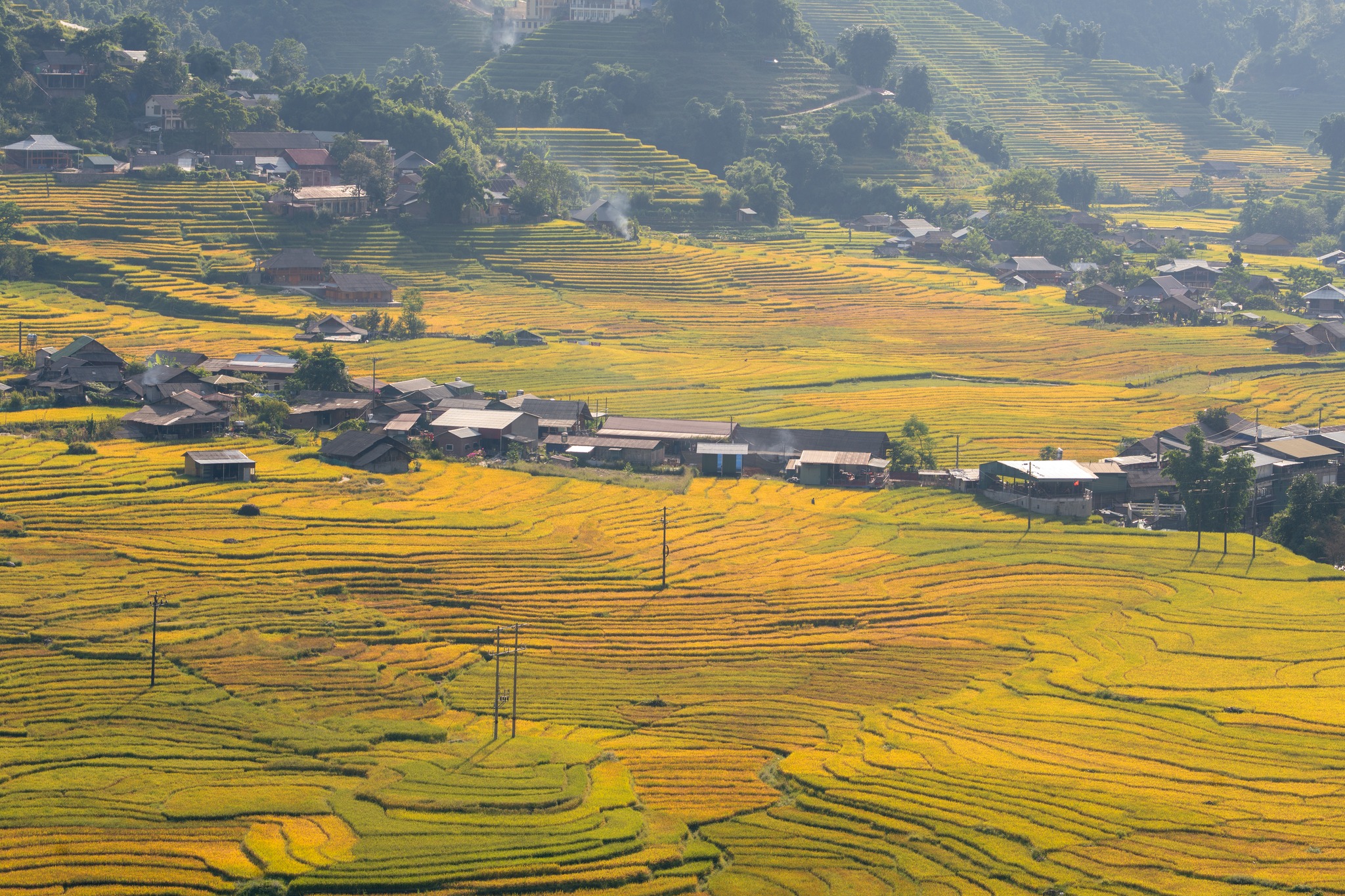 |
Con sui at Ong Ha restaurant on Dien Bien Phu Street. Photo: *Tri Vuong* |
Con sui is available at roadside eateries and Chinese-style restaurants. Ong Ha on Dien Bien Phu Street is a long-standing favorite. A serving costs around 40,000 VND.
Y Linh Ho
After breakfast, head towards Lao Chai to Y Linh Ho, a perfect spot for coffee and rice paddy views. Nestled amidst the Hoang Lien Son mountains, Y Linh Ho boasts vast terraced fields, lush forests, and a clear stream. The rice fields are now a vibrant gold, coloring the hillsides. Visit Sapana, a cafe with large windows and outdoor seating overlooking the rice terraces. Besides coffee, enjoy activities like trekking, waterfall rappelling, stand-up paddleboarding, or swimming. The hospitable locals readily assist visitors with directions and photo spots.
Lao Chai - Ta Van
Lao Chai is a popular spot for viewing the rice harvest in September. Arrive early to avoid crowds. Nguyen Chi Nam recommends visiting in the morning when mist hangs over the terraces, creating a mystical atmosphere with glimpses of farmers tending their fields. The narrow, steep road down to the village is suitable only for motorbikes. Recommended viewpoints include Lao Chai San 2 suspension bridge and Lao Chai Secondary School.
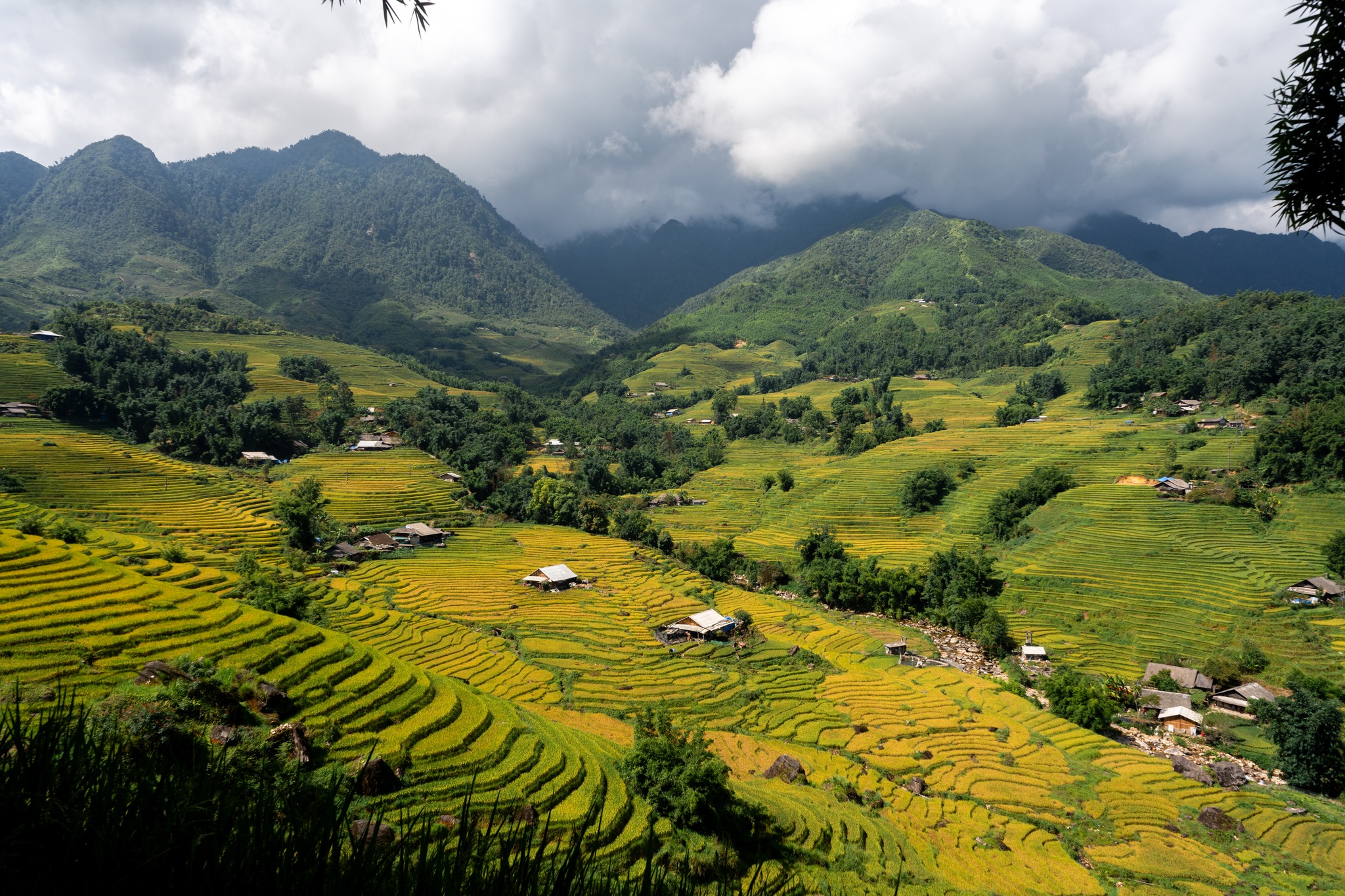 |
Rice in Lao Chai village at the end of August. Photo: *Nguyen Chi Nam*
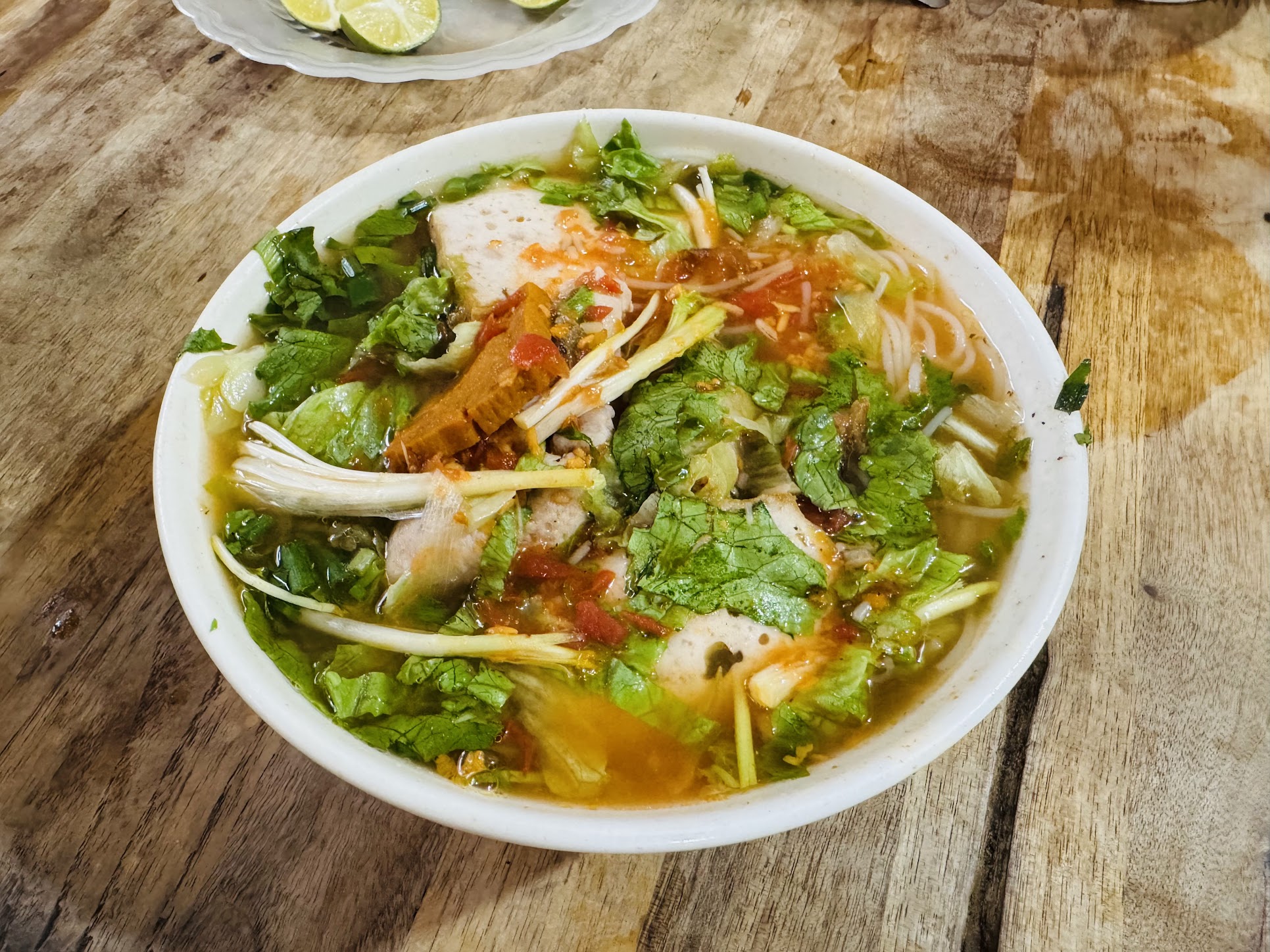 |
Golden rice fields in Ta Van at the end of August. Photo: *Nguyen Chi Nam*
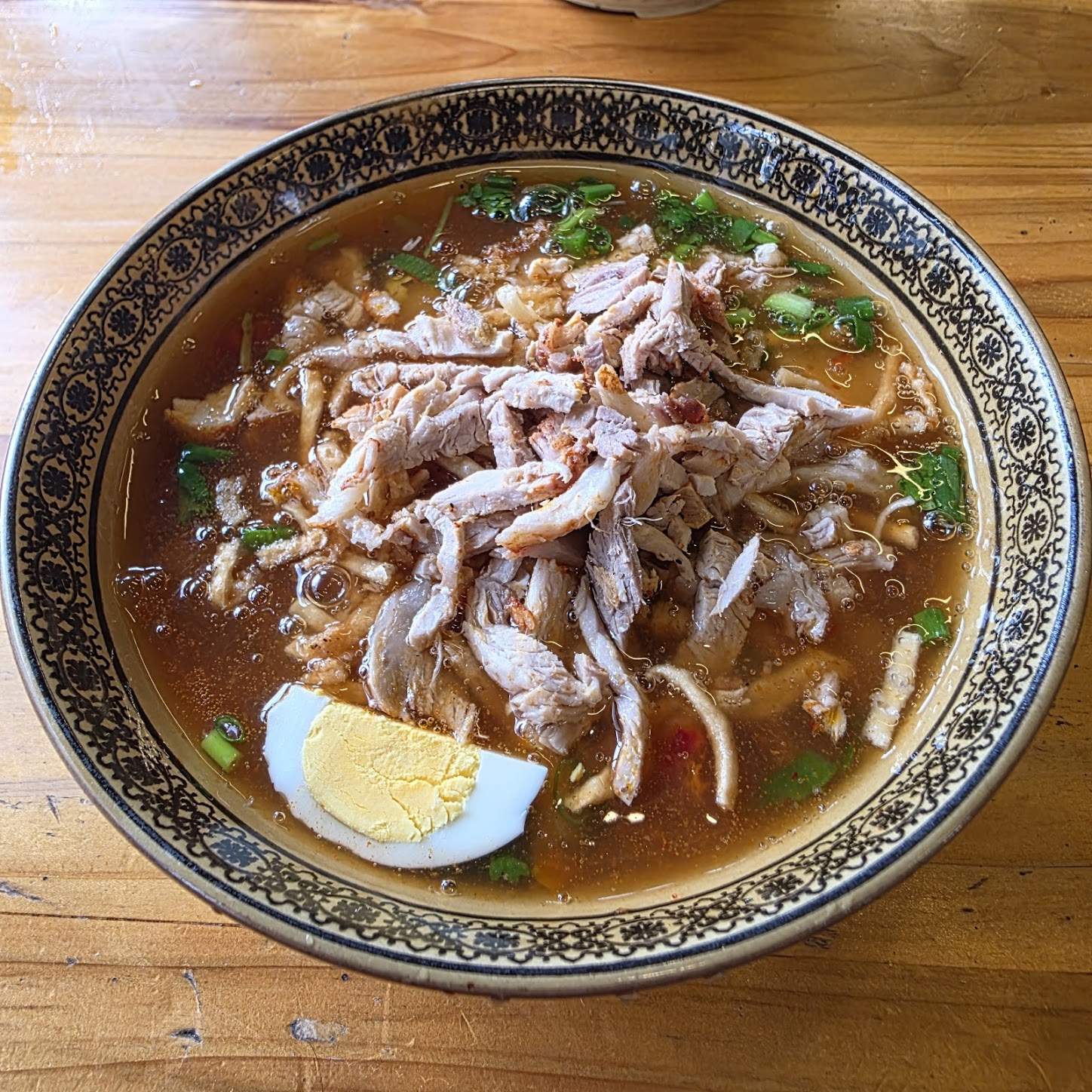 |
Ripe rice in the center of Muong Hoa valley. Photo: *Nguyen Chi Nam*
Twelve kilometers from Sa Pa, Ta Van sits in a lush valley, home to the Giay and H'Mong people. Traditional stilt houses dot the seasonally changing rice terraces, surrounded by streams, waterfalls, and bamboo forests. Unlike the bustling Cat Cat, Ta Van maintains a slower pace of life. After the rain, mist drifts over the golden rice paddies in the autumn air, captivating visitors. "This scenery enchants any photographer or traveler; every few steps, you'll want to stop and take a picture," says Nguyen Chi Nam.
Alternative options
Explore O Quy Ho Pass, Hoang Lien National Park, Nam Cang, Silver Waterfall, and Ham Rong Mountain. These destinations, scattered across various communes and accessible by different routes, are suitable for longer itineraries.
Tuan Anh



